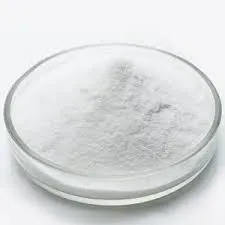
Sep . 28, 2024 19:42 Back to list
Exploring the Applications and Benefits of Hydroxy Methyl Cellulose in Various Industries
Understanding Hydroxy Methyl Cellulose A Versatile Polymer
Hydroxy Methyl Cellulose (HMC) is a cellulose derivative that has garnered significant attention in various industries due to its unique properties. As a non-ionic, water-soluble polymer, HMC is derived from cellulose, the most abundant organic polymer on Earth. Its production involves the chemical modification of cellulose with methyl and hydroxy groups, which enhances its functionality and versatility.
One of the standout characteristics of hydroxy methyl cellulose is its thickening and binding properties. These attributes make it an essential ingredient in a multitude of applications, ranging from food and pharmaceuticals to cosmetics and construction. In the food industry, HMC serves as a stabilizer and thickener, allowing for improved texture and viscosity in products such as sauces, dressings, and ice creams. Its ability to form gels when mixed with water is particularly beneficial, contributing to mouthfeel and the overall sensory experience of food products.
In pharmaceuticals, HMC plays a crucial role in drug formulation. It is commonly used as a binder in tablets and as a controlled-release agent in various drug delivery systems. The polymer's biocompatibility and non-toxic nature render it safe for use in medical applications. Additionally, HMC’s hydrophilic properties help to maintain moisture in pharmaceutical formulations, which can enhance the stability and efficacy of active ingredients.
hydroxy methyl cellulose

Beyond these applications, hydroxy methyl cellulose has made its mark in personal care products, where it functions as a thickener and emulsifier in lotions, shampoos, and other cosmetic formulations
. Its ability to provide a smooth texture and prevent separation of ingredients is invaluable in creating high-quality personal care items that consumers trust and enjoy.The construction industry also benefits from the use of hydroxy methyl cellulose. It is added to cement and mortar as a water-retaining agent, which ensures that mixtures remain workable over extended periods. This characteristic is essential, especially in larger construction projects where timely application is critical. By improving the workability and adhesion of construction materials, HMC helps enhance the overall quality and durability of structures.
Furthermore, the environmental impact of HMC is worth noting. As a cellulose derivative, it is derived from renewable sources, making it a more sustainable alternative compared to synthetic polymers. This eco-friendly aspect aligns with the growing demand for sustainable solutions in various consumer markets.
In summary, hydroxy methyl cellulose is a highly versatile polymer with applications that touch many facets of everyday life. Its unique properties allow it to serve as a thickener, binder, and stabilizer across multiple industries, making it an essential ingredient in food products, pharmaceuticals, cosmetics, and construction materials. As research continues to unlock new potential uses for HMC, its role in fostering innovation and sustainability is likely to expand even further.
-
Versatile Hpmc Uses in Different Industries
NewsJun.19,2025
-
Redispersible Powder's Role in Enhancing Durability of Construction Products
NewsJun.19,2025
-
Hydroxyethyl Cellulose Applications Driving Green Industrial Processes
NewsJun.19,2025
-
Exploring Different Redispersible Polymer Powder
NewsJun.19,2025
-
Choosing the Right Mortar Bonding Agent
NewsJun.19,2025
-
Applications and Significance of China Hpmc in Modern Industries
NewsJun.19,2025







